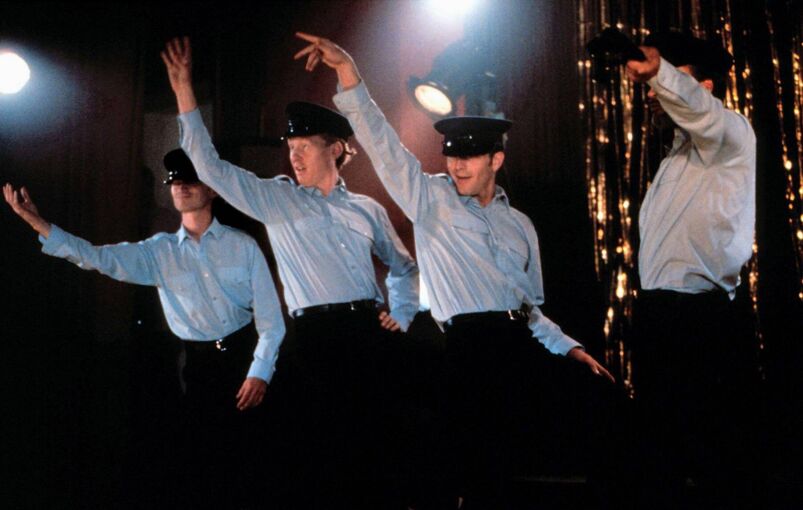
Between the mid-90s and early 2000s, a sort of highly specific film subgenre took shape. Films like Beautiful Thing (1996) and Kinky Boots (2005) dealt with, to varying degrees, the intersection of queerness with the British working class.
Some entries in this mini cannon were more focused on the LGBTQ+ experience than others. Director Hettie MacDonald’s Beautiful Thing, for instance, told the story of two teenage boys coming out and falling in love against the backdrop of a South London council estate—public housing for low-income individuals.
A much later addition, 2014’s Pride, was based on the true story of gay and lesbian activists who aligned themselves with British miners during their 1984–1985 strike, a powerful coalition that ultimately built support for LGBTQ+ rights among the country’s working class and Labour Party.
Other films, like Billy Elliot (2000), touched on queer themes less directly via issues around masculinity and gender expectations in working class communities, while featuring gay supporting characters.
The Full Monty (1997) is arguably the least queer of these films, focused primarily on straight cis characters. This week, an eight-episode sequel to the film, set 25 years later and featuring most of the original cast, premieres on Hulu. Ahead of the new series’ premiere on June 14, it seems worth revisiting the original film and reconsidering just how queer it really was.
The film, directed by Peter Cattaneo and written by Academy Award winning screenwriter Simon Beaufoy, centers on six unemployed men whose lives were upended when a local steel mill that served as the economic lifeblood of their community in the North of England closed down. In an effort to earn some money, they decide to put on a Chippendales-esque all-male strip show, promising to go “the full monty”—i.e. bare it all at the end of their routine.
As in Billy Elliot, the characters in The Full Monty are working class, cisgender men who engage in a line of work, an artform, considered outside the bounds of traditional masculinity. Stripping, of course, involves dancing, as well as situating the male body as the object of sexual desire. Straight men, traditionally, watch women strip, at least in part as a performance of heterosexuality. By stripping themselves, the characters in The Full Monty essentially flip that standard equation—queering it, so to speak.
This is driven home explicitly early in the film when Gaz (Robert Carlyle), the group’s ringleader, repeatedly describes Chippendales dancers as “poofs.” According to Gaz’s own logic, casting himself and his friends in the role of strippers—performers who dress in campy, revealing costumes and put their bodies on display to make money—calls their masculinity and their straightness into question. The film is essentially about a group of men doing something that they consider to be pretty gay.
A lot of this is implicit. The characters don’t sit around discussing how stripping makes them feel about their own gender expression or their sense of their sexual identity. But the scenes in which they struggle to learn their dance routine can certainly be read as depicting a group of men, in a sense, attempting to unlearn rigid expectations about how “real men” are “supposed” to move, how they are supposed to use their bodies to express sexuality. They’re sort of the inverse of the scene in another queer 1997 film, In & Out, in which Kevin Kline’s gay character attempts to move like a straight man, stiffening his walk and resisting the urge to dance exuberantly. The characters in The Full Monty, by contrast, are trying to loosen up, to unleash rather than repress a certain amount of fluid, fey swishiness.
And in a slightly underdeveloped plotline, two characters actually end up expressing their queer desire for each other. At one point in the film, one of the group’s rehearsals at the abandoned mill where they used to work is interrupted by a cop who happens to be passing by. Several of the men are arrested for trespassing and indecent exposure, while Lomper (Steve Huison) and Guy (Hugo Speer) escape wearing only their thongs. The two of them make it Lomper’s house where, flushed with excitement, they share an extremely sexually charged look.
The scene ends before anything more happens, but it’s very much implied that they have sex. Their relationship is later confirmed at Lomper’s mother’s funeral, where they are seen holding hands, to the bemused shock of Gaz and Dave (Mark Addy).
While Guy and Lomper’s relationship is a nice touch—a nod to the fact that queer men exist in small, working-class communities—the film leaves certain questions unanswered. How do each of them identify? Guy reads as sexually confident, while Lomper is quieter, more awkward and shy. But we don’t know how either character understands his sexuality, whether they were out to themselves or anyone else prior to the events of the film, or whether they struggled with their attraction to other men. When we first meet Lomper in the film, he’s attempting to take his own life by suicide, and while it is implied that this is primarily a result of economic despair, he also admits that he’s lonely, that he has no mates. Given the revelation of his sexuality later in the film, it’s reasonable to wonder whether shame and internalized homophobia played a role in Lomper’s suicide attempt.
Unfortunately, the film doesn’t address this. We never see Guy and Lomper discussing their sexuality either with each other or anyone else. They experience no blowback or homophobia that we’re shown. Their relationship is presented in a more-or-less matter-of-fact way, and everyone moves on. While that may leave something to be desired—an exploration of the inner lives of these queer men, their experience of queerness outside of cosmopolitan LGBTQ+ enclaves—it can also be read as progressive for the time. Lomper and Guy are here, they’re queer, and everyone just gets used to it.
Focused as it is on male strippers, The Full Monty features a certain amount of male nudity, none of it particularly explicit. We see the characters in their underwear as they try to get comfortable being naked around each other in anticipation of the big reveal at the end of their show. We see them rehearsing in their thongs. But when the moment for them to bare all ultimately arrives at the end of the film, we only see them from behind.
While I think it’s safe to assume that men getting their kit off is part of The Full Monty’s appeal for gay audiences, there is something fundamentally not-gay about the film’s approach to depicting the male body—and it’s not just the fact that it looks away when the characters finally deliver on the film’s title.
The film’s comedy, of course, depends in part on the fact that Gaz and co. are not paragons of male beauty. They’re average guys with potbellies and scrawny arms. But that shouldn’t necessarily preclude a certain element of erotic charge in the way their bodies are filmed. While it acknowledges queer desire and gestures toward the idea of men as sex objects, The Full Monty seems uninterested in depicting the male body as desirable, as sexy. This has nothing to do with what the actors actually look like, and more to do with the film’s perspective: it lacks the sense that any male body could be desirable. It lacks the gay gaze.
Of course, homoeroticism isn’t the only barometer by which a film’s queerness should be judged. Beautiful Thing is far more romantic than it is erotic, while in Kinky Boots the sex is, famously, in the heel and not really anywhere else. But in a film about male strippers, the absence of the gay gaze is significant. If we were to place these films along the Kinsey Scale, with Pride and Beautiful Thing at a 6 and Billy Elliot around a 3 or 4, I’d have to put The Full Monty at a 1.5 or 2: certainly not exclusively heterosexual, but also, not that gay, really.
Watch the trailer for FX’s The Full Monty: A comeback that’s been 25 years in the making below and stream it on Hulu beginning June 14.

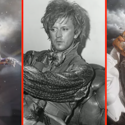







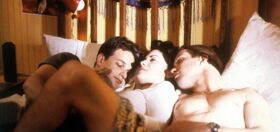
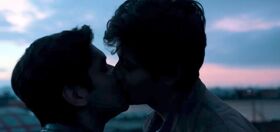





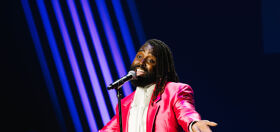

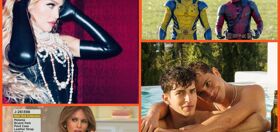
nm4047
Answer is simple. Not at all.
HalcyonDays
I don’t think of the film as gay at all.
However, the Broadway musical adaptation expanded the gay story line, give it far more depth and a gave the gay couple a very touching song.
In general, The Full Monty is rather underrated musical. I thought the original Broadway production was superb.
theaterbloke
I was able to see The Full Monty in London when Paul Keating played Guy. Keating had previously played Straight Dave (who was anything but) in the Pet Shop Boys musical, Closer To Heaven. It should be noted that Hugo Speer, who played Guy in the movie, has been fired from The Full Monty series because of what was termed inappropriate behavior. Apparently he was changing in his trailer when a female runner knocked on his door. Reports vary as to whether she entered without waiting or whether he invited her in or whether he answered the door naked, but his exposure led him to be reported and released from his contract. I don’t know if they recast the part or are just eliminating it. Personally, after the John Barrowman kerfuffle, I just have a hard time believing that an actor would deliberately expose himself to a young crew member.
johncp56
????????????????